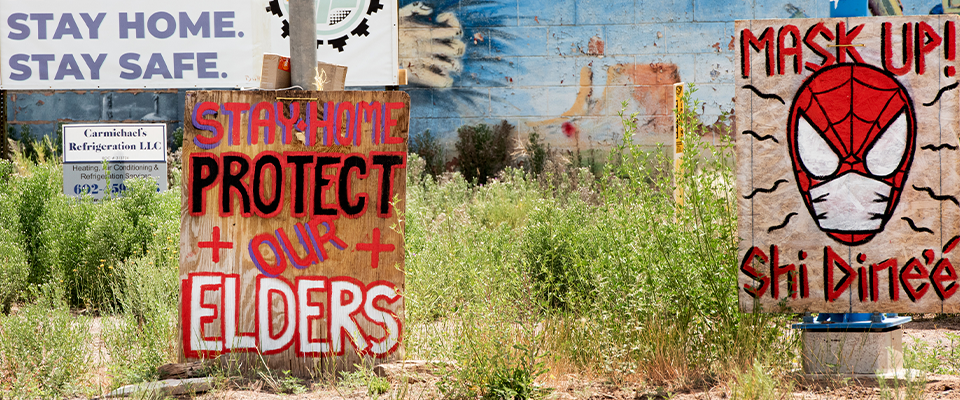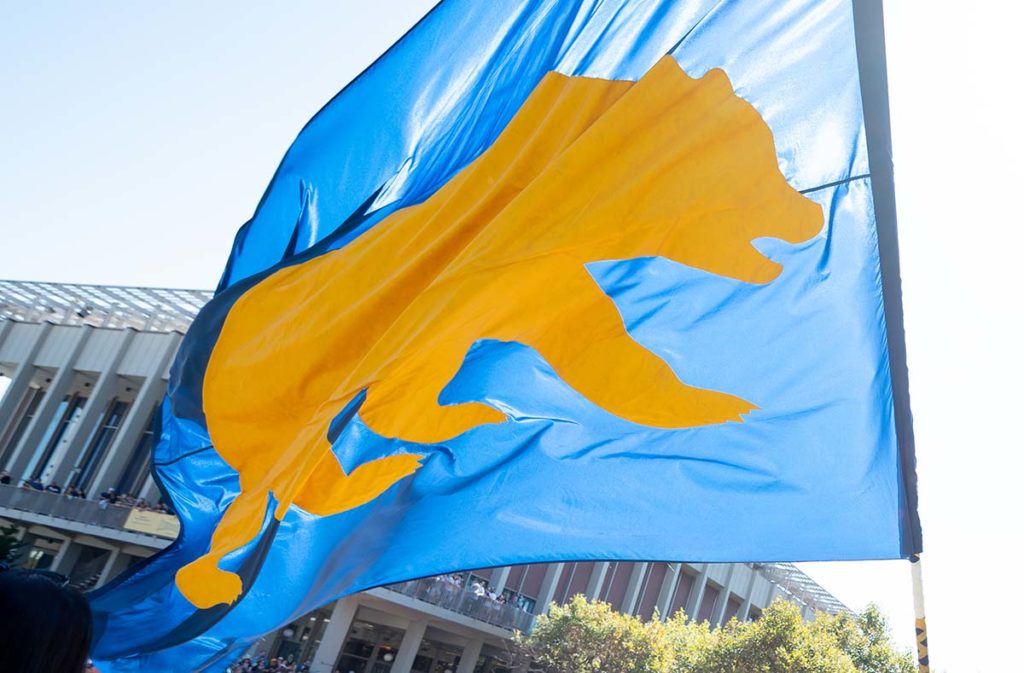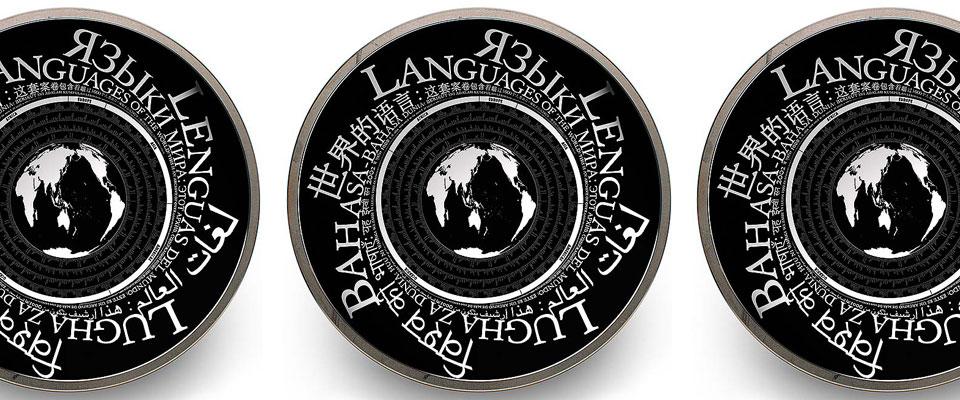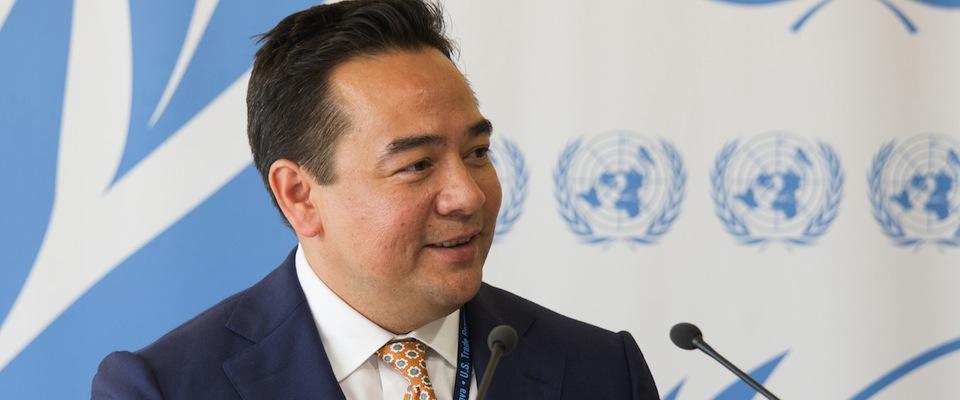The scene is familiar: A hospital bed, a respirator, medical personnel in full PPE. But while the attending doctor is from San Francisco, California, the hospital is located 1,000 miles away, in the middle of 27,000 miles of vast, desert land.
The Navajo Nation, which spans Utah, Arizona, and New Mexico, is self-governed but receives economic support from the U.S. government. However, with federal spending on health services historically low for Native, compared with non-Native populations throughout the country, the Navajo Nation has been underfunded and understaffed for years. And despite being early to impose regional curfews and having the country’s highest per capita testing rate, for most of 2020 the Nation suffered from one of the highest infection rates of COVID-19—known locally as Dikos Ntsaaígíí-19 or Big Cough-19. Home to 156,000 people, the region has already seen nearly 26,754 positive cases of COVID-19 and 1,170 deaths, a result of multiple forms of neglect. Between limited access to running water, electricity, and healthy food and the fact that the Navajo Area Indian Health Service only has one bed per 900 residents, including a mere 15 ICU beds and 71 ventilators, the withholding of basic public health resources has had a devastating effect on the Navajo Nation.
“So much of the work that I do has such a deep colonial history. Global health came out of international health, which came out of WWII, which came out of colonial medicine, which was used as a tool to conquer.”
Back in March, when the pandemic was just starting to take hold in the U.S., hospitals in the Navajo Nation were already under-resourced and over-extended. Critically in need of reinforcements, the Navajo Nation President Jonathan Nez publicly asked for support from health care workers. In less than a month’s time, more than 40 fellows from the Oakland-based HEAL Initiative had arrived to work alongside Navajo nurses and doctors to treat tens of thousands of patients in the five largest hospitals serving Navajo patients.
Since its beginning in 2015, the HEAL Initiative, which stands for Health, Equity, Action and Leadership, has partnered with 19 different hospitals and community programs in nine different countries, as well as the Navajo Nation. Under the guidance of co-founder and UC Berkeley grad Dr. Sriram Shamasunder, HEAL aims to challenge what he calls the traditional “fly in fly out” approach by building close, long-standing partnerships between the local and visiting fellows and reinforcing work already in motion in those communities. In other words, the goal isn’t only to provide support to under-resourced places like Oakland, Burundi, or the Navajo Nation, but to redefine altogether the role of physicians practicing medicine in communities where they are guests.
“So much of the work that I do has such a deep colonial history and has such a racist history, and we are a continuum of that,” Shamasunder says. In the Navajo Nation, this means that non-Native HEAL fellows are working to undo a historic lack of trust between patient and doctor. “The program that I run has to own the fact that global health came out of international health, which came out of WWII, which came out of colonial medicine, which was used as a tool to conquer.”
Shamasunder says his practice of medicine was largely informed by his time as a student at Berkeley—one class in particular.
While an undergraduate, he took a poetry course taught by the late June Jordan, a Black revolutionary, educator, and poet. Though a molecular and cell biology student himself, Shamasunder recalls the impact of witnessing her political alignment with Palestinians, learning through observation how to stand in solidarity with others. Poetry, too, helped Shamasunder ask deeper, philosophical questions and find his voice as an aspiring, equity-oriented doctor. “She really shaped how so many of her students thought about the world,” he remembers. “Whose lives matter and how do you commit to justice and stand alongside vulnerable people?”

After he graduated, he and Jordan stayed in regular contact; he was in medical school and she was undergoing chemotherapy treatment for breast cancer. They spoke once or twice a week by phone, and their calls dealt with stories of grassroots struggle against oppression and the ongoing impact of colonialism. “It almost felt like the passing of a baton to younger generations. I just listened,” Shamasunder says. “I was 22 and hearing this elder who had lived such a deep and purposeful life; I was just paying attention.”
After completing his medical degree, Shamasunder went abroad to work in Burundi and Rwanda. “I [wanted to] have the biggest level of impact, and I also wanted to try to understand the political, economic, spiritual, deep levels of service.” But Shamasunder quickly became disillusioned with the international health care system. He recalls providing care as he was trained to: without building relationships with the community he served or even knowing whom or why they’re helping—something he now calls a “delusion.” “You just have too much power for your lack of understanding,” he says of doctors practicing medicine in this way, adding that it takes time to learn what a community really needs and how to be useful.
HEAL, in many ways, is a response to those early days of his professional medical career. In 2015, HEAL was formed with an initial cohort of 20 fellows. Today the Initiative, which describes itself as an “immersion program,” brings together over 40 rotating fellows (U.S. based physicians or nurses) and site fellows (health care workers at partner sites) to engage in conversation about the role of medical professionals and how to better serve the needs of their communities.
The Navajo Nation is one such place where, for the last five years, HEAL fellows have worked alongside frontline workers in hospital and emergency medicine. But this year things looked a little different.
In April, a first team of 21 HEAL nurses and doctors responded to President Nez’s call and flew to the Navajo Nation, originally intending to stay for a one-month voluntary assignment. But as cases continued to rise, two-thirds of the original cohort remained and were joined by a second team of nurses and doctors, about 40 providers total. Now, almost nine months later, they continue to assist Navajo staff in treating COVID patients, as well as supporting regular medical rotation and working towards long-term resilience by training more local caregivers.
“I’m very grateful to the HEAL program because they’ve been a real advocate for the different facilities on the reservation,” says Dr. Adriann Begay, chief of the Walk-In Primary Care Clinic and acting Ambulatory Care Director at Gallup Indian Medical Center. “They’ve helped to provide a teaching environment for not only the medical staff but for nursing and ancillary staff.”
Since the beginning, HEAL has made it a priority to accommodate the needs of the local community, from communicating with patients in their preferred language to integrating local practices and beliefs into their care. Which hasn’t always been easy.
“One of the biggest parts of my orientation to new providers is a historical context of where we’re at,” Begay says. “I like to remind people that sometimes you’re gonna be put into very complex clinical scenarios [with] people from different cultural beliefs,” including some patients who are Navajo-speaking or have more traditional ideas about health and medicine.
Shamasunder points to differences in how caregivers perceive illness. He believes that the Americanized, for-profit medical care system puts the blame on the sick, which he says only exacerbates historical inequities in a place like the Navajo Nation. Describing the language of doctors as a “smoke screen,” he says caregivers have a tendency to prioritize their medical expertise over the patient’s experience. “I think the starting place for us is unlearning a lot of those things.”
Acknowledging these histories is important, Shamasunder says, because the relationship between medical professionals and patients carries an inherent imbalance of power. And for HEAL, questioning power dynamics is integral to their practice of anti-colonialist medicine. “Those legacies are with us and [we] can’t kid ourselves to think that [we] don’t occupy that body of knowledge and historical lineage.”
Ray Levy Uyeda is a Bay Area-based freelance writer who covers justice and activism. Find her on Twitter @raylevyuyeda.





















